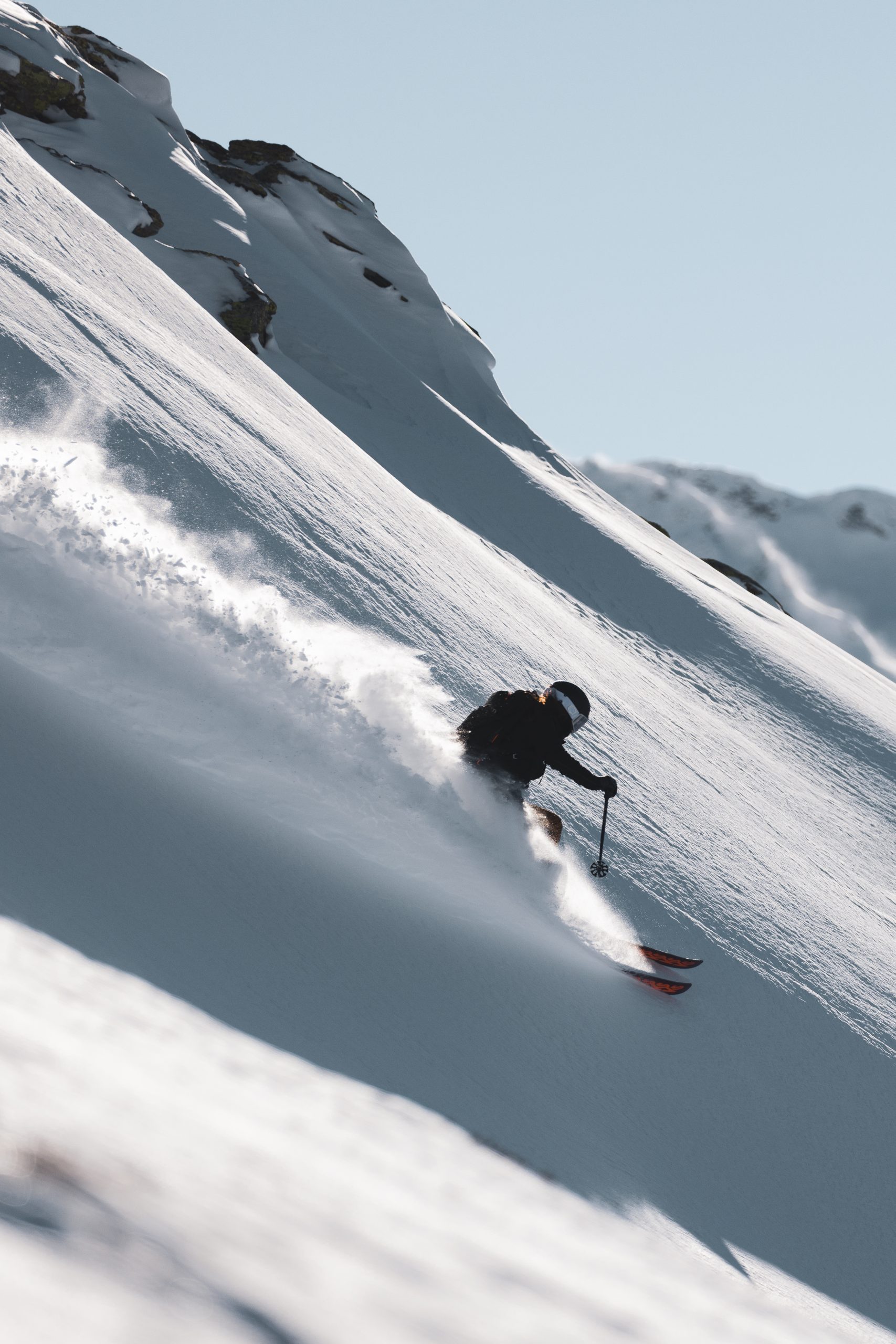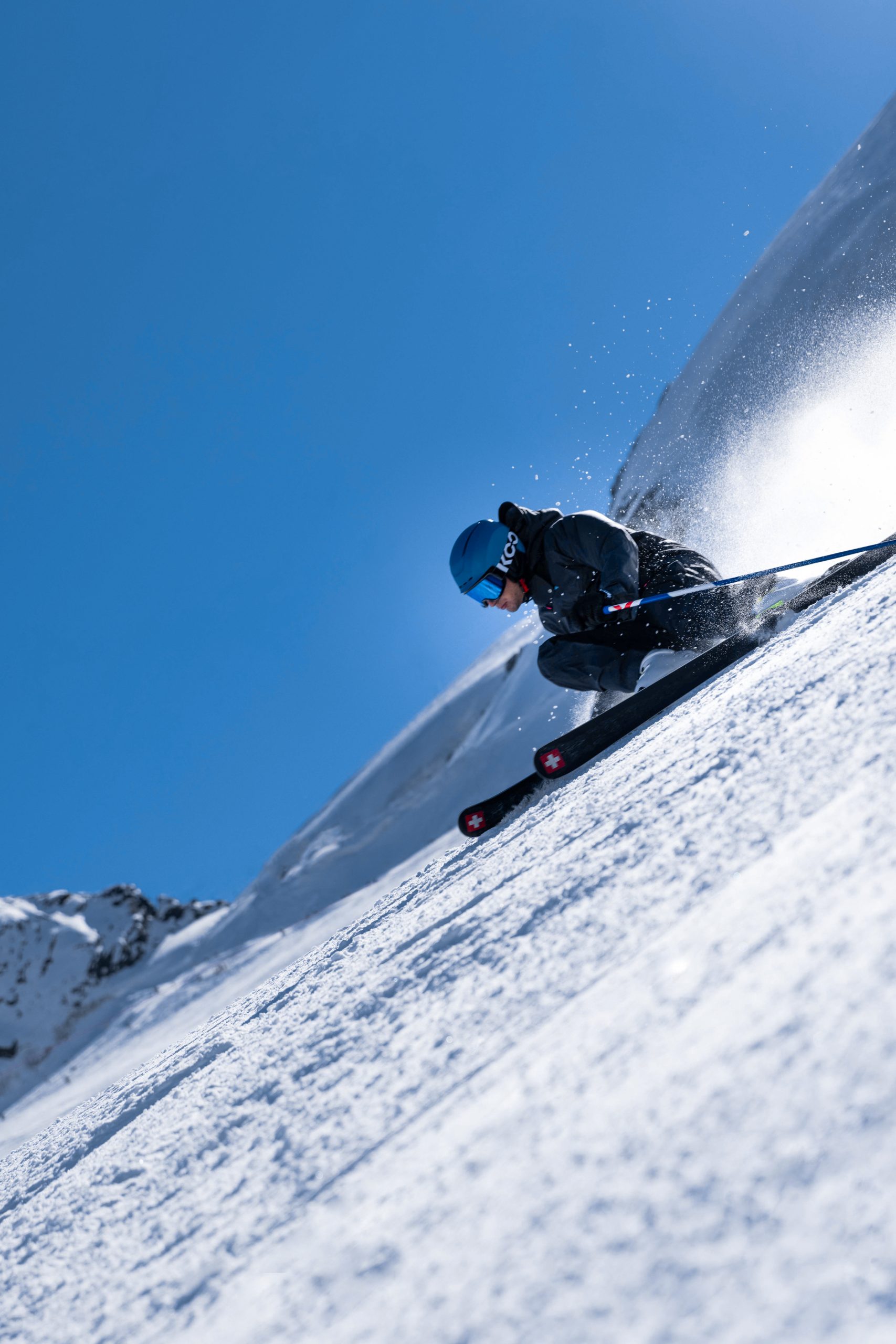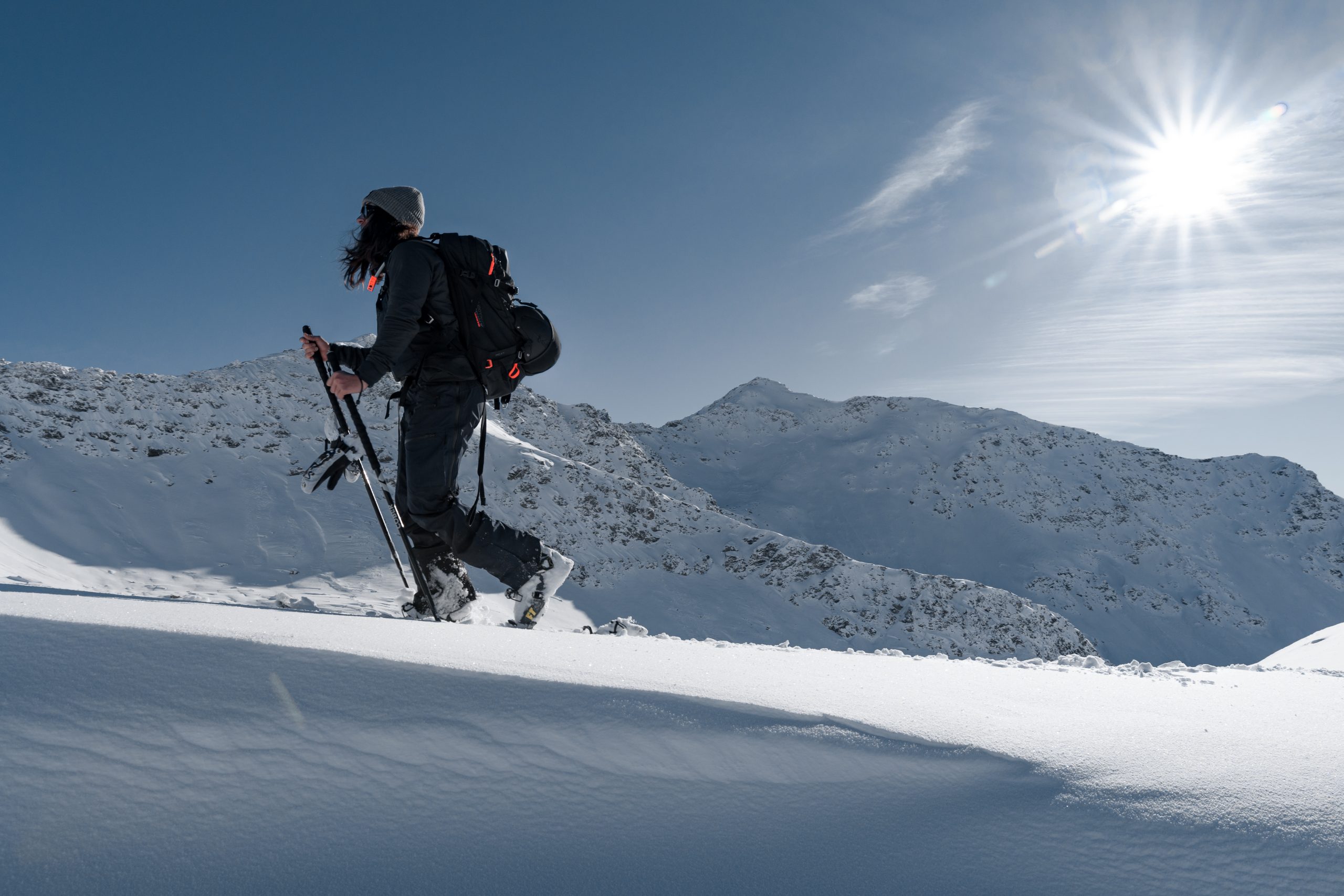Poles are perhaps the most overlooked or least known items of ski equipment. Most of the time we only take into account the length of the pole, but we ignore the fact that there are many other characteristics that we need to pay attention to and that vary from discipline to discipline.
There are poles suitable for alpine skiing, others for freestyle skiing, others for freeriding or ski touring. Each of these has specific characteristics that make them suitable for one rather than another skiing technique. Choosing your ski pole carefully, not just on the basis of colour or price, is essential for better skiing.
Ski poles help you maintain your balance and stability, especially when snow conditions are less than ideal.
Here are our tips for choosing the right ski poles for you!
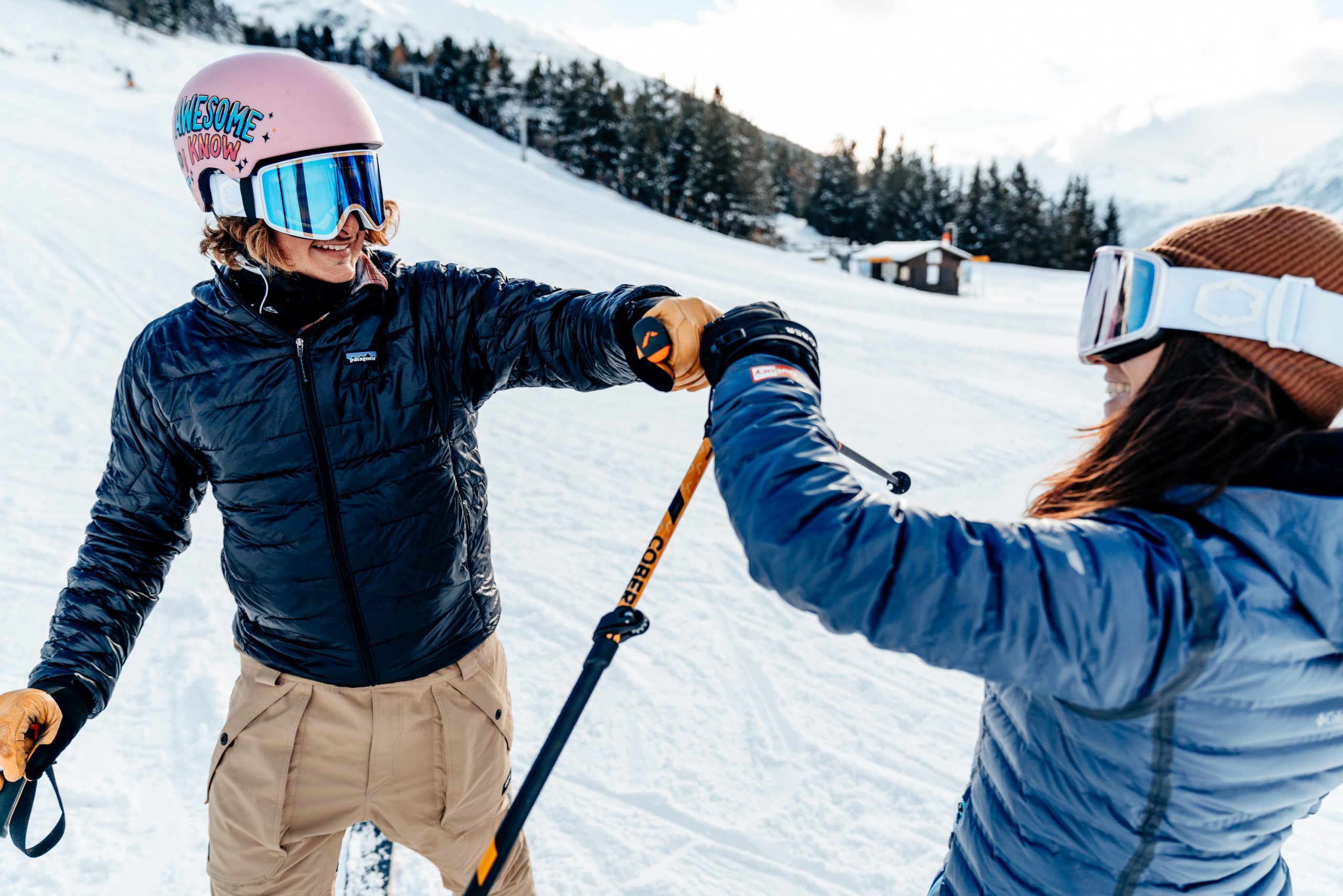
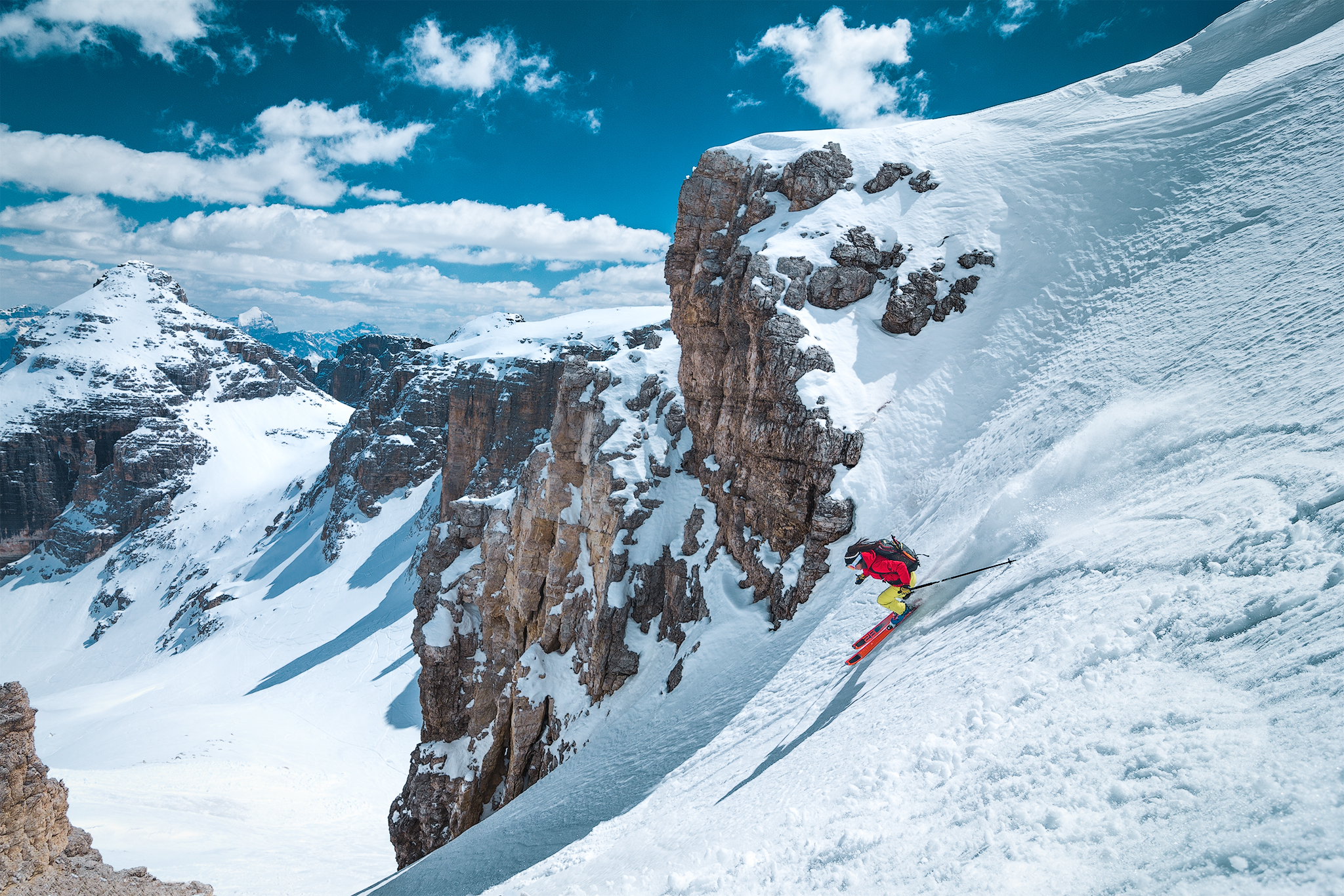
The first thing to look at when choosing ski poles is the length. The most common method is based on your height. There is a handy size guide in our shop: just enter your height to find out the recommended pole size.
Otherwise, there is another effective method to find the perfect size, especially for alpine skiing. Turn the poles upside down, i.e. with the tip pointing upwards, and hold the pole under the baskets. If your elbow forms a right angle of exactly 90° then this is the perfect size for you!
Discover our recommended selection of alpine ski poles here.
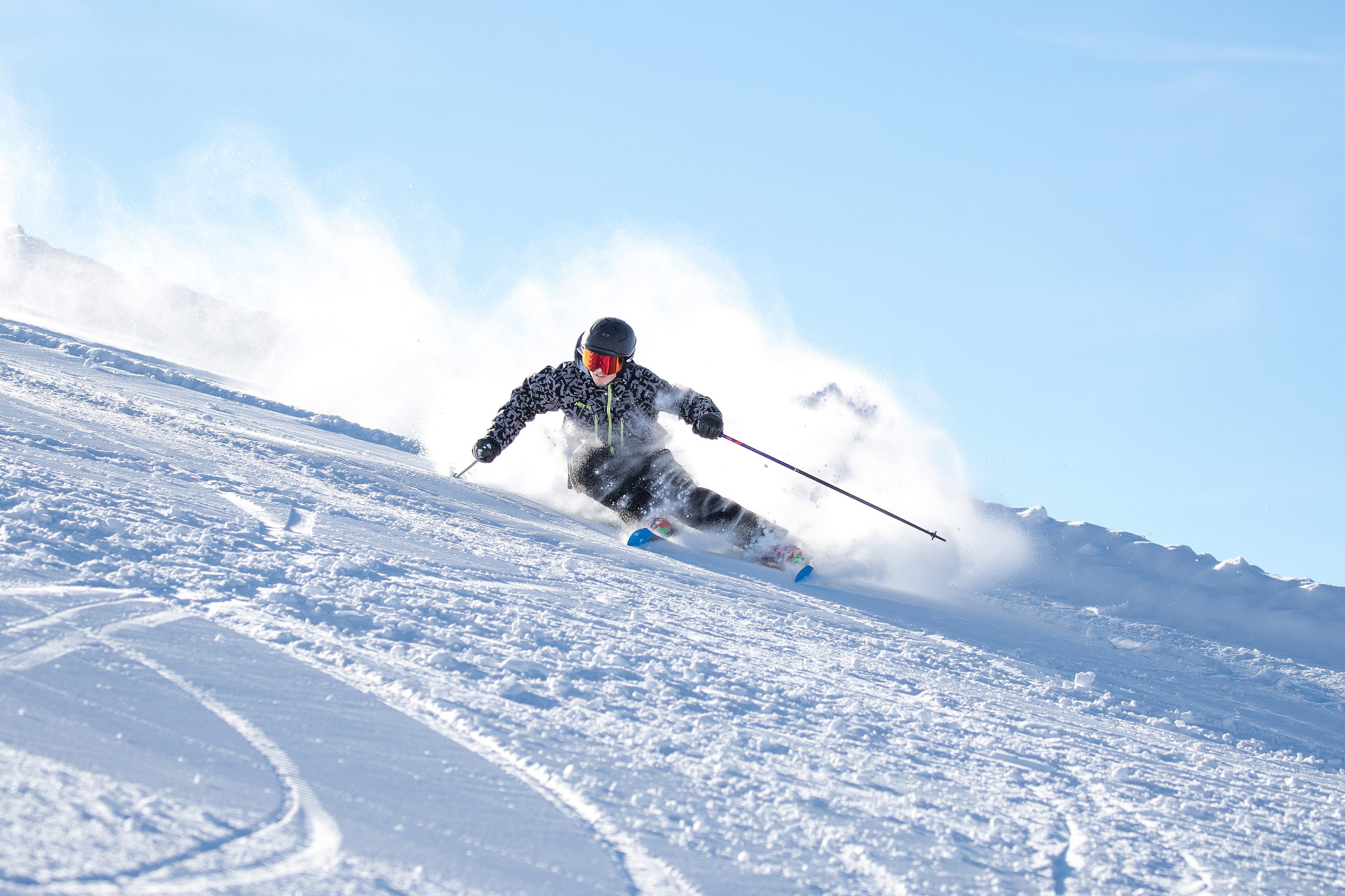
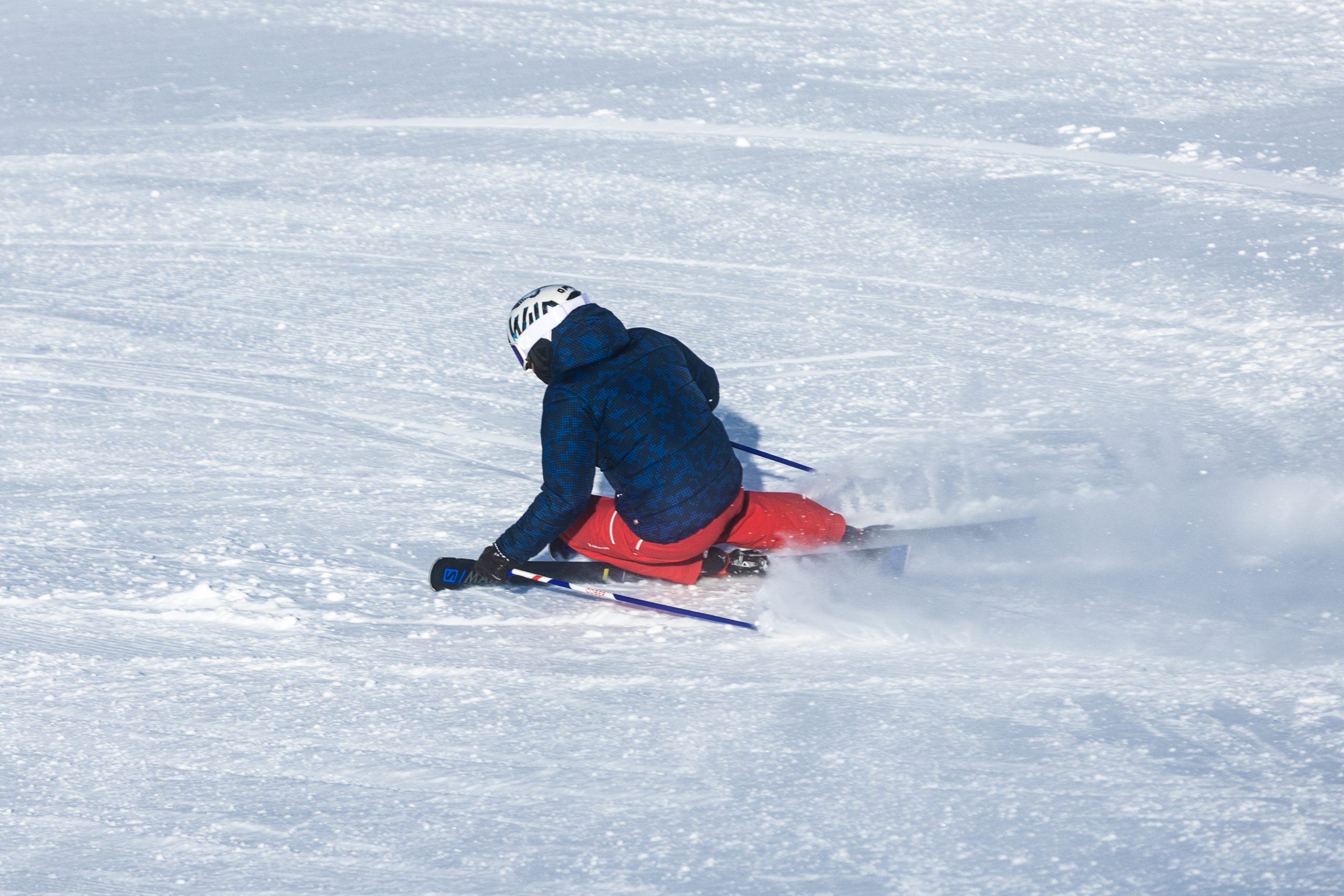
However, as we mentioned at the beginning of the article, there are different poles with different characteristics depending on the discipline.
For freeride and ski touring poles it would be ideal, on the one hand, to have slightly longer poles than for alpine skiing, to give you more impetus during the ascent, but on the other hand an excessive length could get in the way during the descent. This is why most skiers opt for a so-called telescopic pole for these disciplines, i.e. a pole that can be extended and adjusted with different length options. For example, the Lever is a good option for those who love the adrenaline rush in powder.
Here you will find our selection for freeriding or ski touring.
For freestyle skiing, on the other hand, poles are used infrequently, but they help mainly to maintain balance. When using them, it is suggested to use poles that are much shorter than normal to facilitate jumps and tricks: our Big Air and Giraffa models were designed for the Italian National Freeski team (for whom we are the official supplier). For example, the Giraffa was designed specifically for Italian athlete and Big Air world champion Silvia Bertagna.
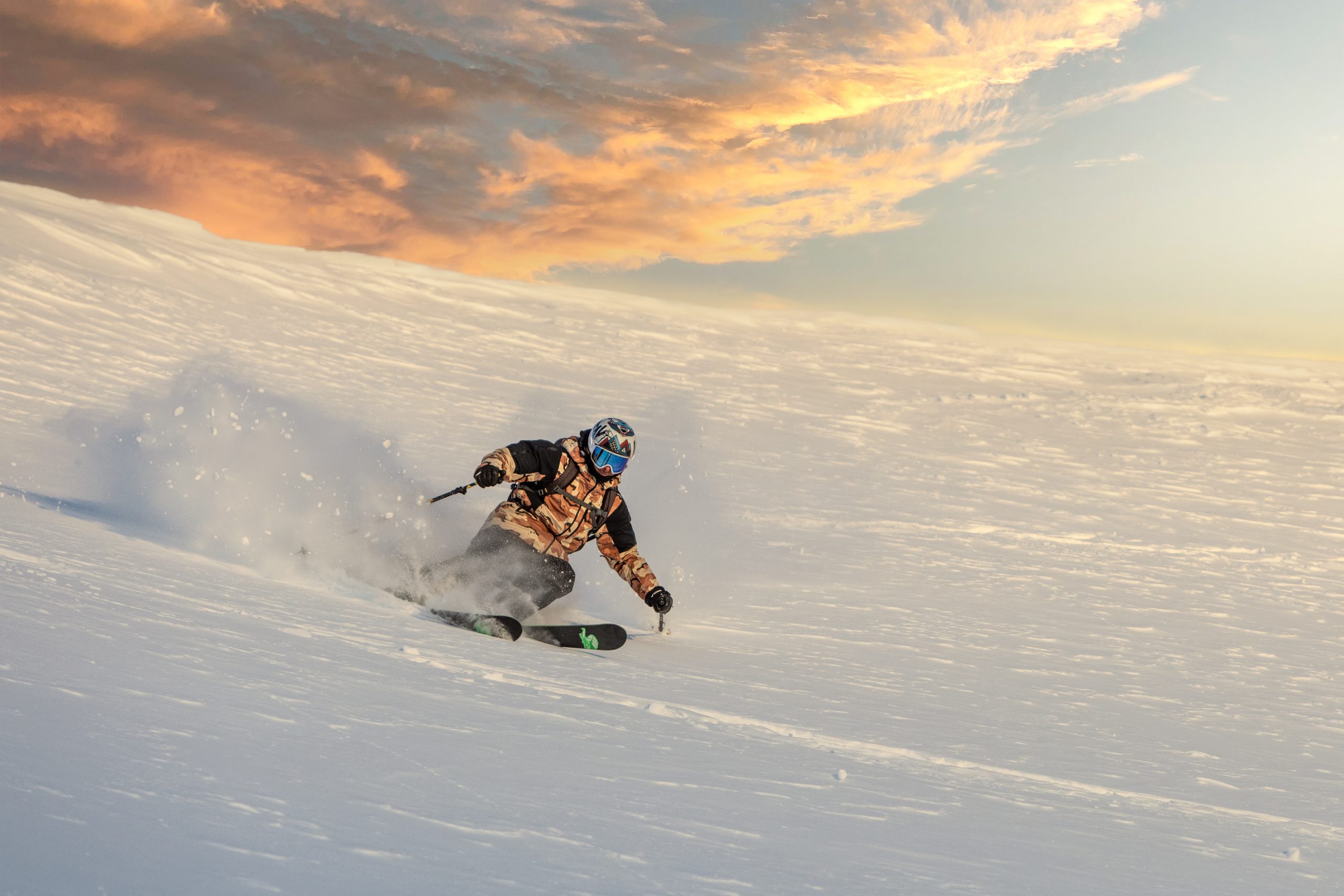
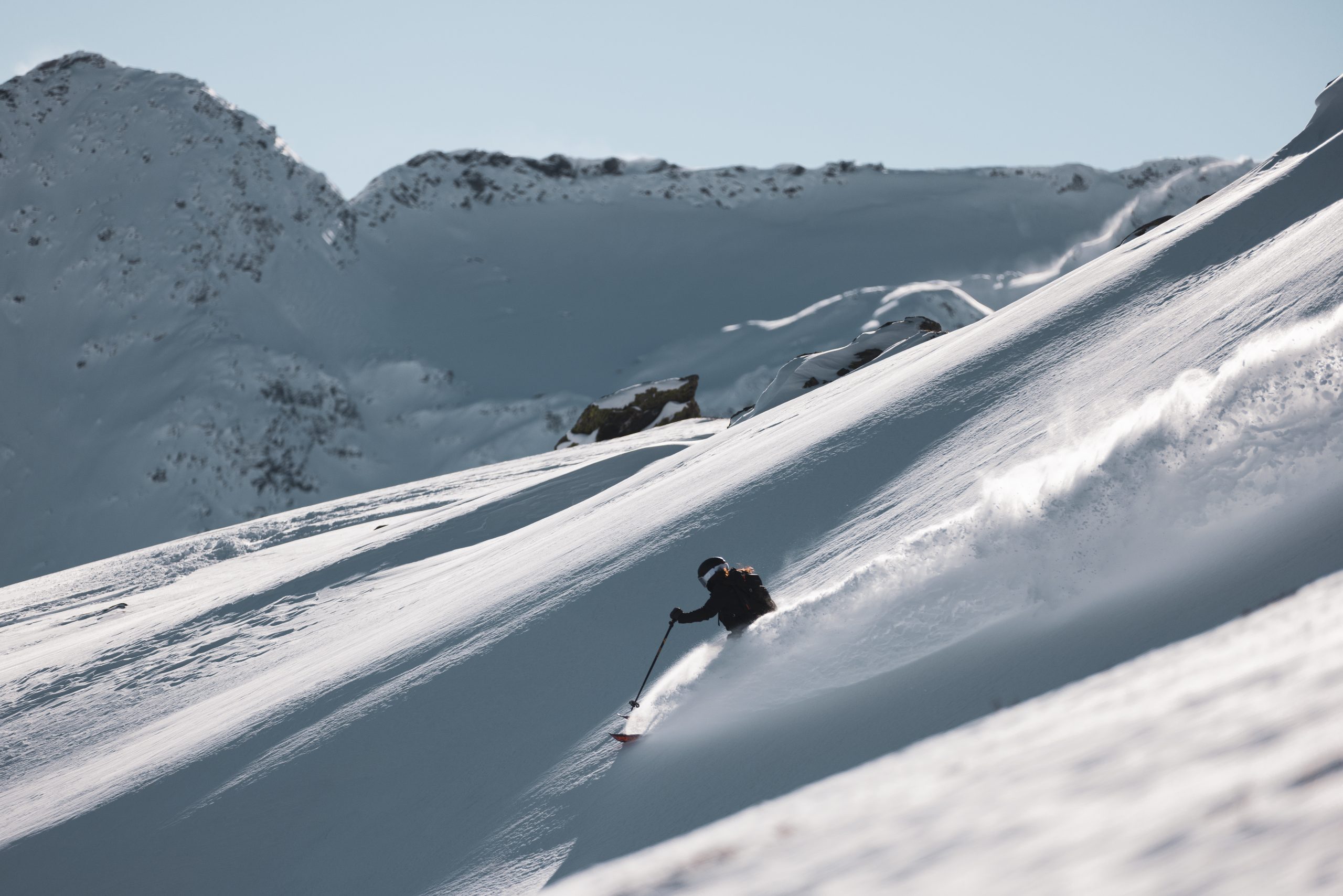
The ski pole is not only made up of its length, but there are also other very important parts to consider when choosing the perfect one for you.
Are you ready to choose your new poles?
Text: Snowit
